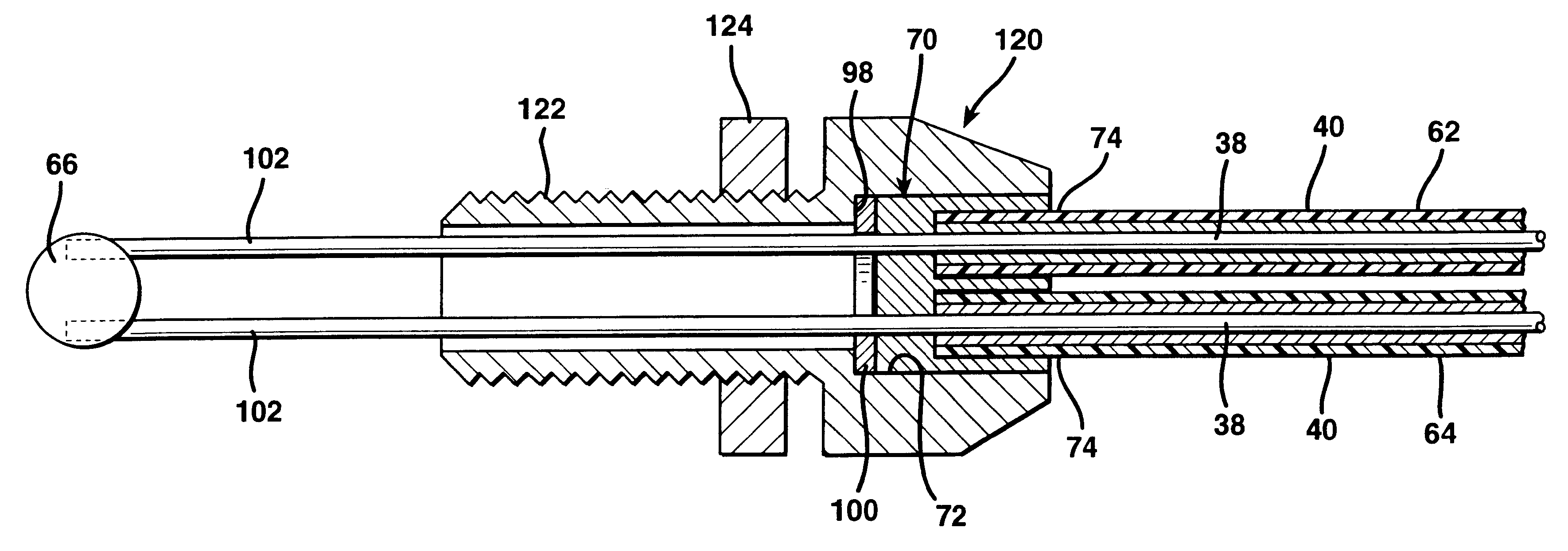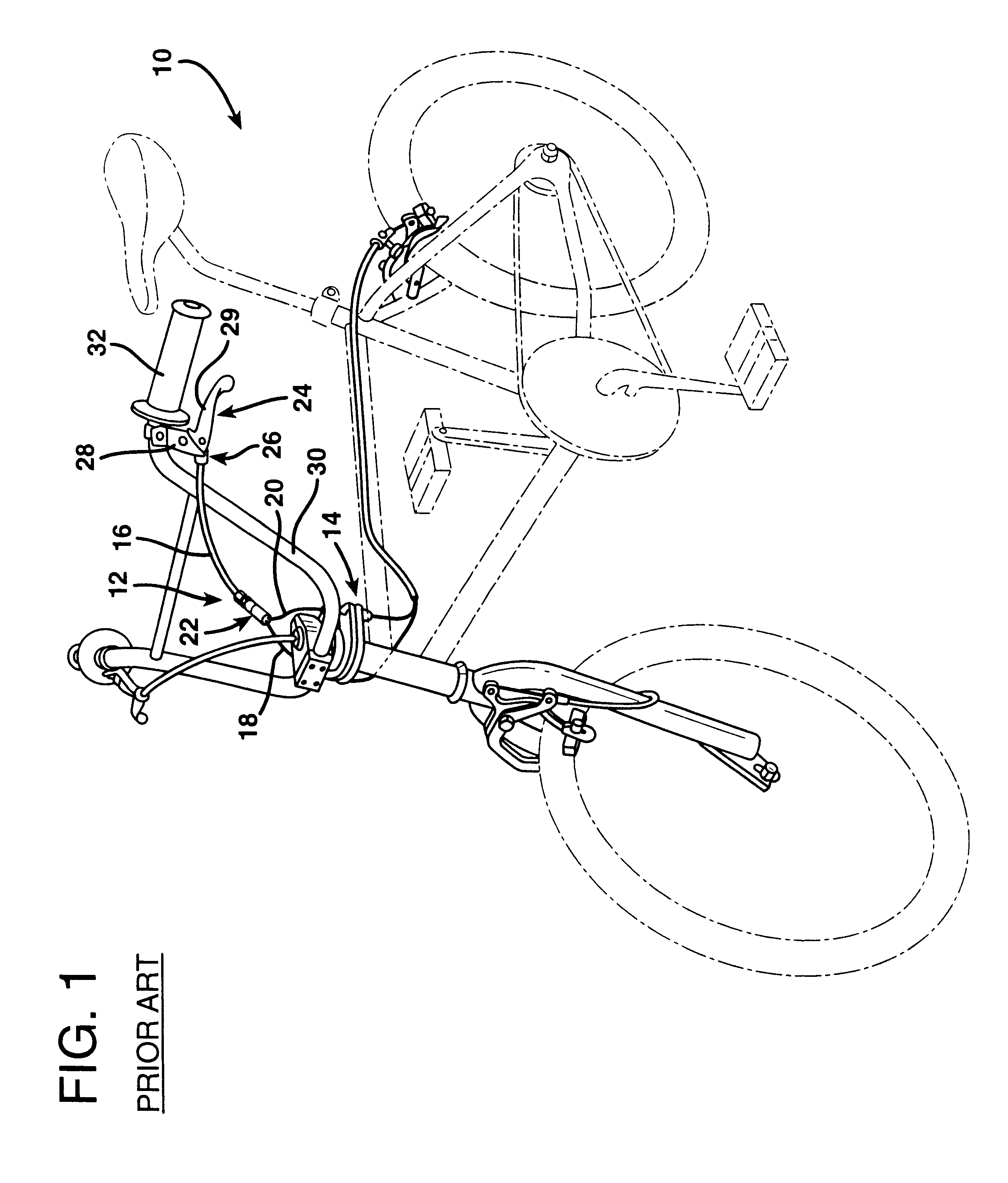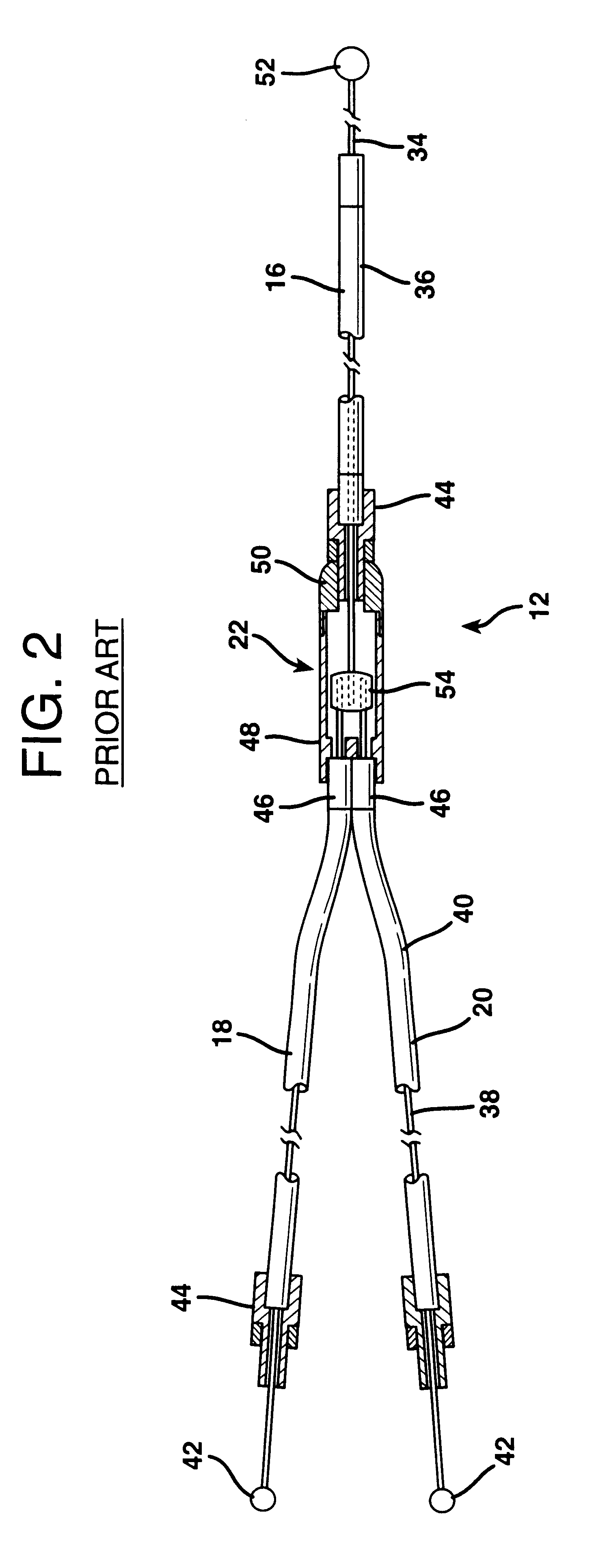Bicycle brake cable system
a brake cable and bicycle technology, applied in the direction of bicycle brakes, cycle equipment, transportation and packaging, etc., can solve the problems of loss of responsiveness in the brake system, inability to manipulate, and usually quite heavy
- Summary
- Abstract
- Description
- Claims
- Application Information
AI Technical Summary
Benefits of technology
Problems solved by technology
Method used
Image
Examples
Embodiment Construction
FIG. 1 illustrates a bicycle 10, the standard wheel, sprocket, seat, and frame of which are shown in phantom only as a basis for reference. The bicycle 10 employs a conventional rotary brake cable 12 as employed with a conventional rotatable brake coupling system indicated at 14. The conventional rotary brake cable 12 employs a force application segment 16 to which force transmission segments 18 and 20 are joined at a conventional splitter 22 located at an intermediate location along the overall length of the brake cable 12. In fact, the splitter 22 is typically located rather near the rotatable brake coupling system 14 in conventional systems. The force application end of the force application segment 16 is connected to a bicycle brake lever assembly 24 by means of a conventional barrel adjuster 26. The brake lever assembly 24 includes a brake lever assembly body 28 attached by a mount to the handlebar 30 of the bicycle 10 immediately adjacent one of the handgrips 32 thereof.
FIG. 2...
PUM
 Login to View More
Login to View More Abstract
Description
Claims
Application Information
 Login to View More
Login to View More - R&D
- Intellectual Property
- Life Sciences
- Materials
- Tech Scout
- Unparalleled Data Quality
- Higher Quality Content
- 60% Fewer Hallucinations
Browse by: Latest US Patents, China's latest patents, Technical Efficacy Thesaurus, Application Domain, Technology Topic, Popular Technical Reports.
© 2025 PatSnap. All rights reserved.Legal|Privacy policy|Modern Slavery Act Transparency Statement|Sitemap|About US| Contact US: help@patsnap.com



